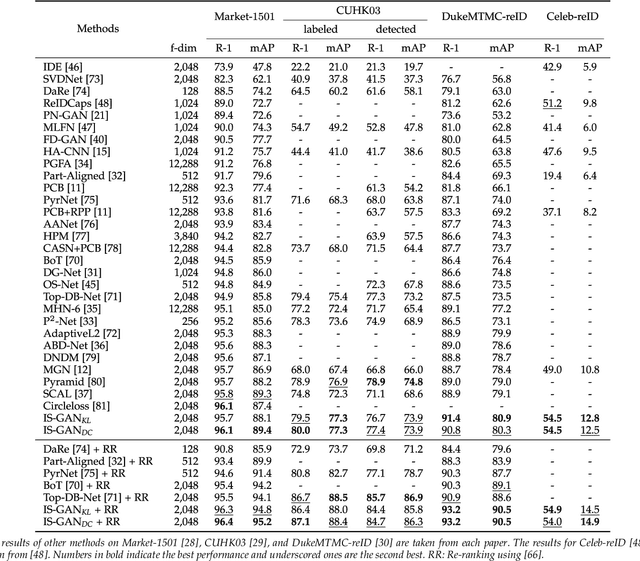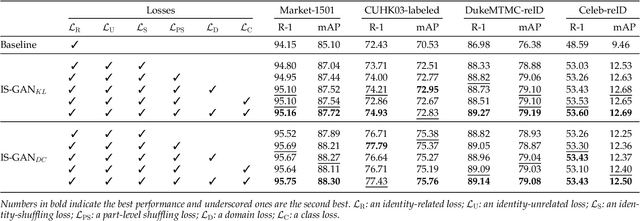Disentangled Representations for Short-Term and Long-Term Person Re-Identification
Paper and Code
Sep 09, 2024



We address the problem of person re-identification (reID), that is, retrieving person images from a large dataset, given a query image of the person of interest. A key challenge is to learn person representations robust to intra-class variations, as different persons could have the same attribute, and persons' appearances look different, e.g., with viewpoint changes. Recent reID methods focus on learning person features discriminative only for a particular factor of variations (e.g., human pose), which also requires corresponding supervisory signals (e.g., pose annotations). To tackle this problem, we propose to factorize person images into identity-related and unrelated features. Identity-related features contain information useful for specifying a particular person (e.g., clothing), while identity-unrelated ones hold other factors (e.g., human pose). To this end, we propose a new generative adversarial network, dubbed identity shuffle GAN (IS-GAN). It disentangles identity-related and unrelated features from person images through an identity-shuffling technique that exploits identification labels alone without any auxiliary supervisory signals. We restrict the distribution of identity-unrelated features or encourage the identity-related and unrelated features to be uncorrelated, facilitating the disentanglement process. Experimental results validate the effectiveness of IS-GAN, showing state-of-the-art performance on standard reID benchmarks, including Market-1501, CUHK03, and DukeMTMC-reID. We further demonstrate the advantages of disentangling person representations on a long-term reID task, setting a new state of the art on a Celeb-reID dataset.
 Add to Chrome
Add to Chrome Add to Firefox
Add to Firefox Add to Edge
Add to Edge